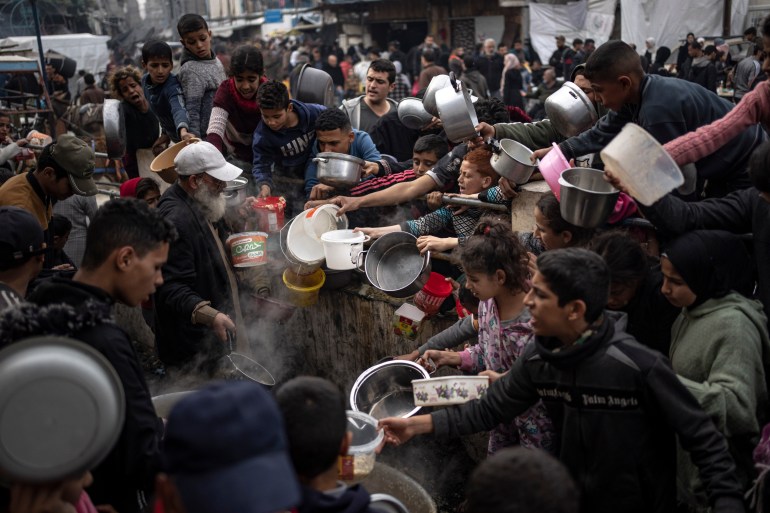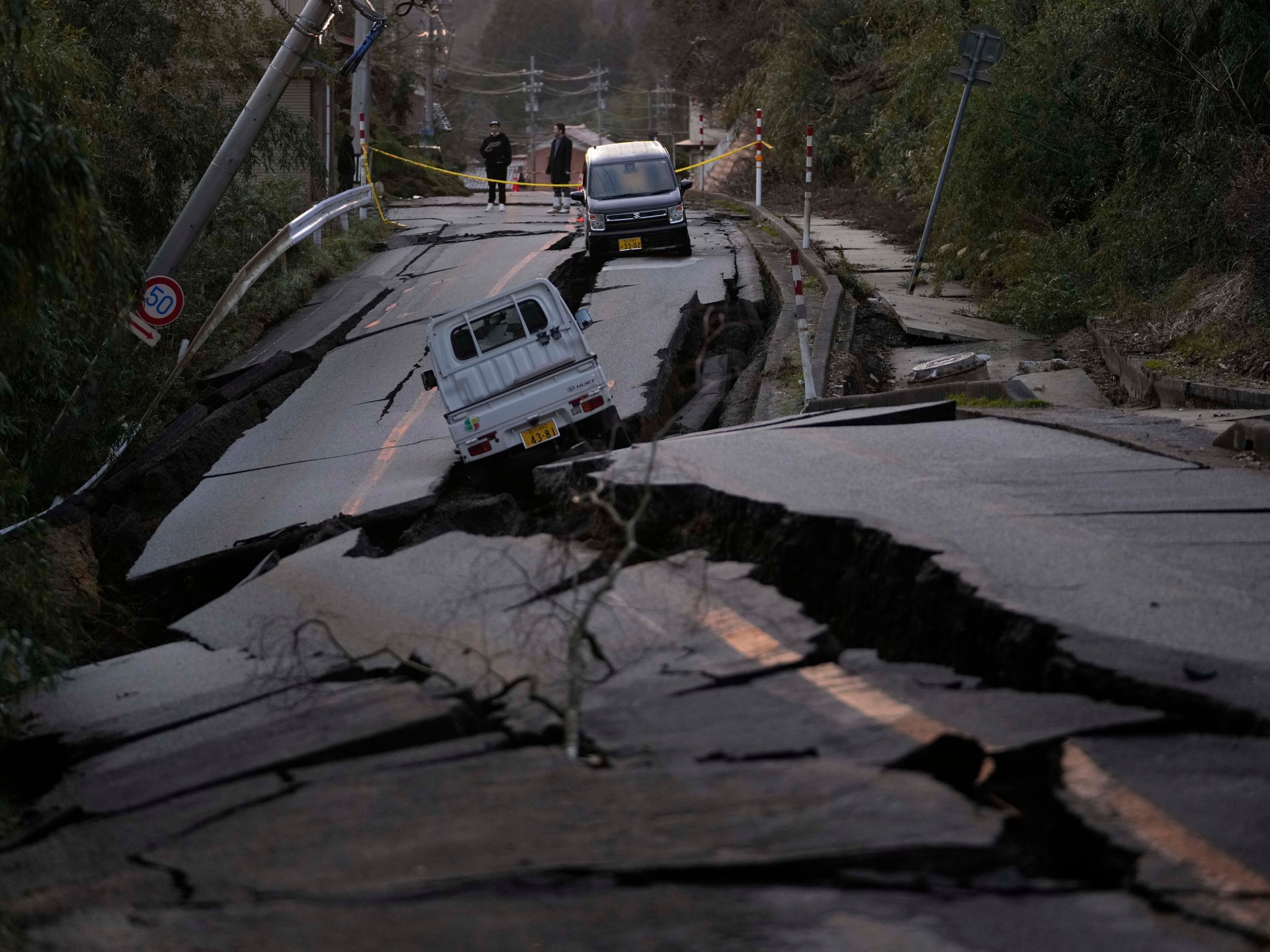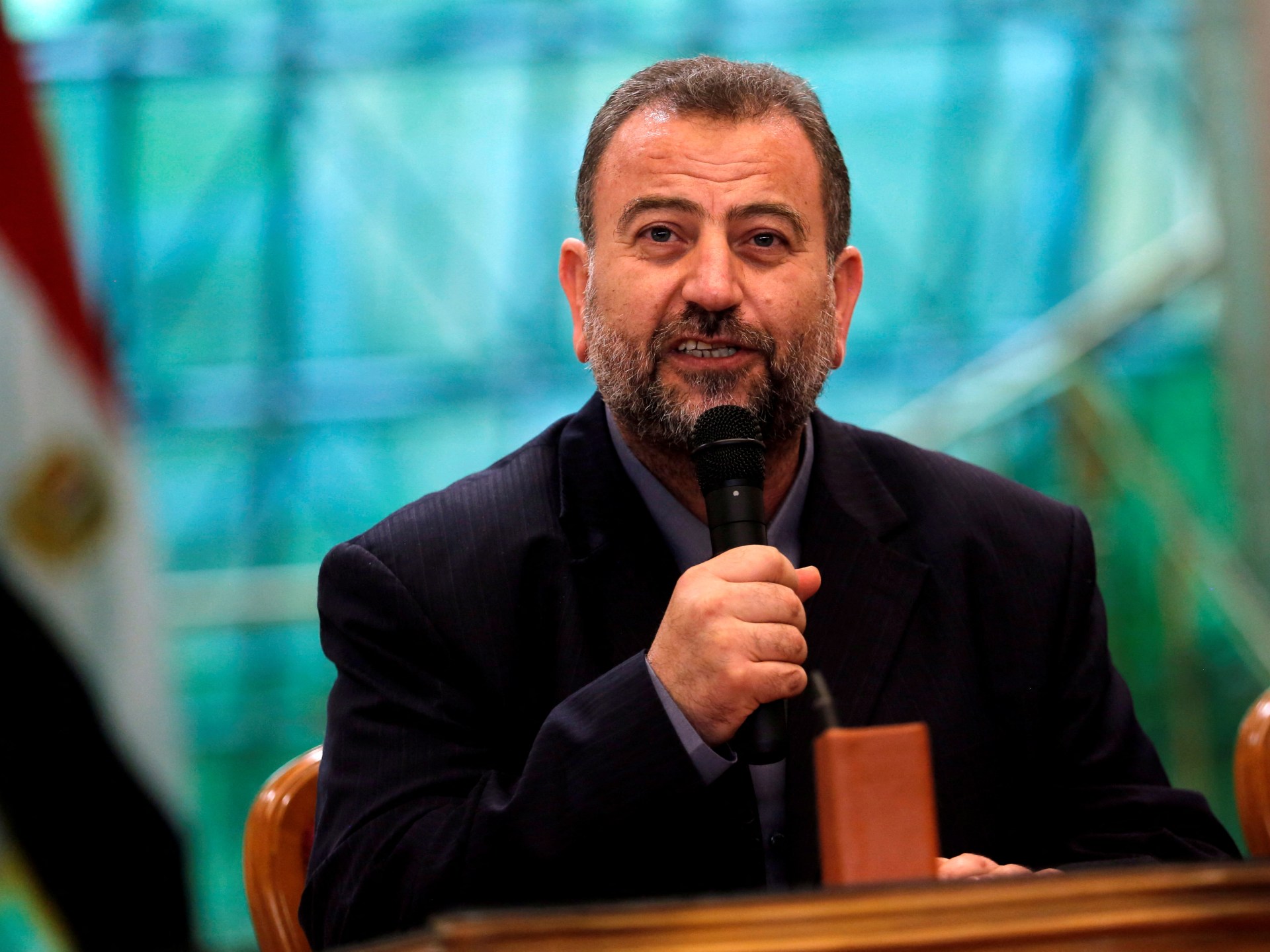The proportion of households affected by acute food insecurity is largest ever recorded globally, the report says.
Published On 21 Dec 2023
The entire 2.3 million population of Gaza is facing crisis levels of hunger and the risk of famine is increasing each day, a United Nations-backed report says.
The proportion of households in Gaza affected by high levels of acute food insecurity is the largest ever recorded globally, according to the report by the Integrated Food Security Phase Classification (IPC) published on Thursday.
The extent of hunger in Gaza has eclipsed even the near-famines in Afghanistan and Yemen of recent years, according to figures in the report.
‘Everybody in Gaza is hungry’
“It doesn’t get any worse,’’ the World Food Programme’s chief economist, Arif Husain, said.
“I have never seen something at the scale that is happening in Gaza and at this speed – how quickly it has happened in just a matter of two months.”
#Gaza
Urgent action is needed.
Hostilities, including bombardment, ground operations & besiegement of the entire population have caused catastrophic levels of acute food insecurity.
There is a risk of Famine.
Read more ➡️https://t.co/b358hNlY4i pic.twitter.com/e9C155XqAP
— The Integrated Food Security Phase Classification (@theIPCinfo) December 21, 2023
The report by 23 UN and nongovernmental agencies found that the entire population in Gaza is in a food crisis with 576,600 people at catastrophic – or starvation – levels.
“It is a situation where pretty much everybody in Gaza is hungry,” Husain said.
“People are very, very close to large outbreaks of disease because their immune systems have become so weak because they don’t have enough nourishment,” he said.
 International aid agencies say Gaza is suffering from shortages of food [Fatima Shbair/AP]
International aid agencies say Gaza is suffering from shortages of food [Fatima Shbair/AP]
The report said every single person in Gaza is expected to face high levels of acute food insecurity in the next six weeks.
The 23 agencies forecast that in the “most likely scenario”, the entire population of the Gaza Strip would be at “crisis or worse” levels of hunger by February 7 after four months of war. Under the IPC’s five-phase food insecurity classification, crisis in phase three, emergency is phase four and catastrophe or famine is phase five.
“This is the highest share of people facing high levels of acute food insecurity that the IPC initiative has ever classified for any given area or country,” the report said.
The international humanitarian organisation CARE called the figures “alarming”.
Risk of famine
The humanitarian situation in Gaza has deteriorated rapidly since Israel began a major military operation on October 7 with heavy air strikes and a ground offensive laying waste to wide areas of the enclave.
“There is a risk of famine, and it is increasing each day that the current situation of intense hostilities and restricted humanitarian access persists or worsens,” the IPC for Gaza said.
The IPC sets the global standard for determining the severity of a food crisis using a complex set of technical criteria.
The report warned that the risk of famine is “increasing each day”, blaming the hunger on insufficient aid entering Gaza.
Trucks bringing aid from Egypt have delivered some food, water and medicine, but the UN says the quantity of food is just 10 percent of what is needed for the territory’s inhabitants, most of whom are displaced.
Distribution of aid within Gaza has been hampered by military operations, inspections of aid demanded by Israel, communications blackouts and shortages of fuel.
Some desperate Palestinians in Gaza have jumped onto aid trucks to try to grab scarce supplies of food and other goods. There have been reports of residents eating donkey meat and emaciated patients begging for food.
Meanwhile, the death toll from Israel’s relentless bombardment of Gaza has surpassed 20,000, 70 percent of them women and children.
About 1.9 million Gaza residents – more than 80 percent of the population – have been driven from their homes. More than a million are cramming UN shelters.
The war has also pushed Gaza’s health sector into collapse. Only nine of its 36 health facilities are still partially functioning – and all are located in the south, the World Health Organization said on Thursday.
Source
:
Al Jazeera and news agencies

 Movie
Movie 4 months ago
82
4 months ago
82 






![Presidents Day Weekend Car Sales [2021 Edition] Presidents Day Weekend Car Sales [2021 Edition]](https://www.findthebestcarprice.com/wp-content/uploads/Presidents-Day-Weekend-car-sales.jpg)



 English (United States)
English (United States)